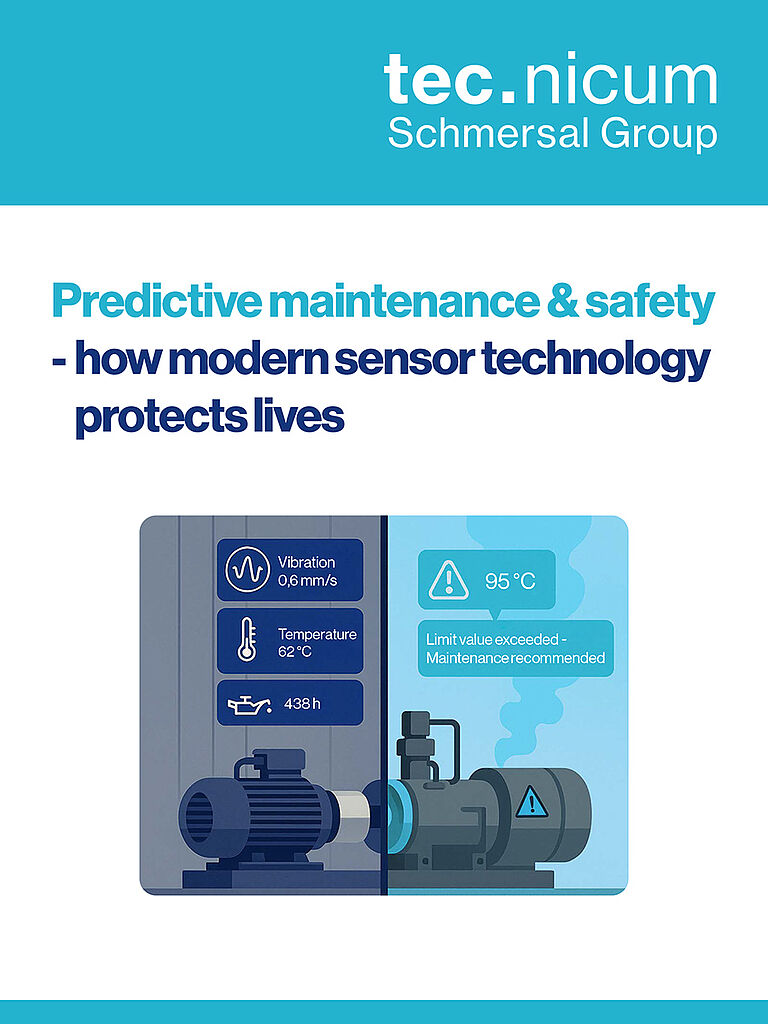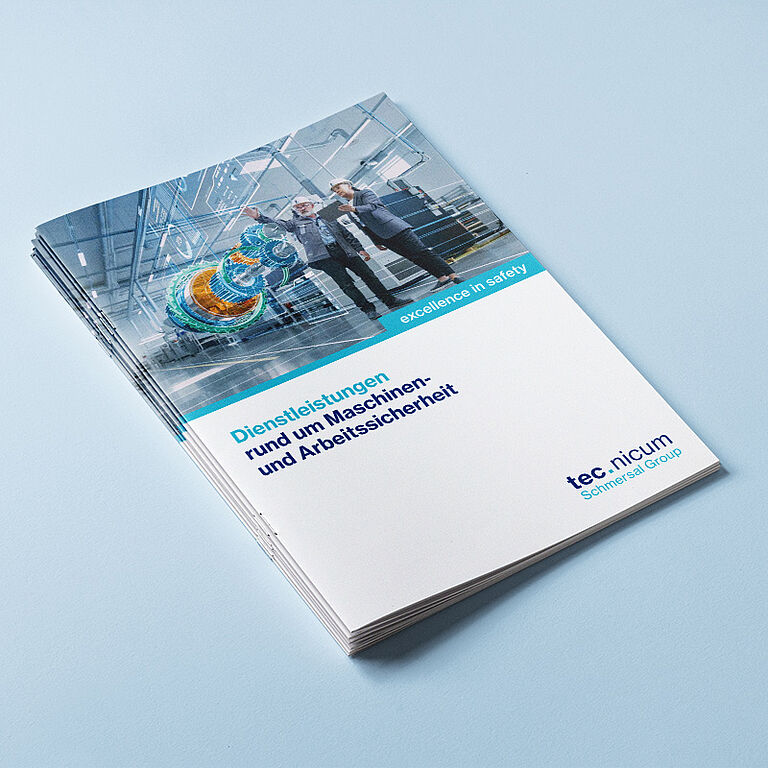Predictive maintenance & safety – how modern sensor technology protects lives
However, more and more often, safety does not begin with an emergency, but much earlier with data. Predictive maintenance uses sensor data to detect anomalies in machine behaviour at an early stage. This not only prevents expensive downtime, but can also avoid accidents.
An example from practice:
A vibration sensor on a milling machine suddenly reports increased values. The analysis shows that a bearing is starting to wear. If action is taken now, the damage can be rectified at an early stage – before a mechanical blockage or even a dangerous tear-off occurs.
Another example:
Temperature sensors on a hydraulic unit detect a steady rise in temperature, which indicates an incipient leak or an oil level that is too low. If this condition is not recognised, there is a risk of sudden pressure loss, leaks or even a fire hazard – sensors can be used to intervene in good time.
The advantages are manifold:
- Early warning system for potential hazards
- Fewer repair operations under time pressure
- Reduction of human error through automated monitoring
- Greater operational safety – even with older systems
But how far have we really come?
What do you think?
Has predictive maintenance already arrived in your working environment – or is it still more of a topic for future projects?
And:
In your opinion, will sensor technology be an indispensable part of a machine‘s safety concept in the future?
Contact us now
and profit from our excellence in safety!













